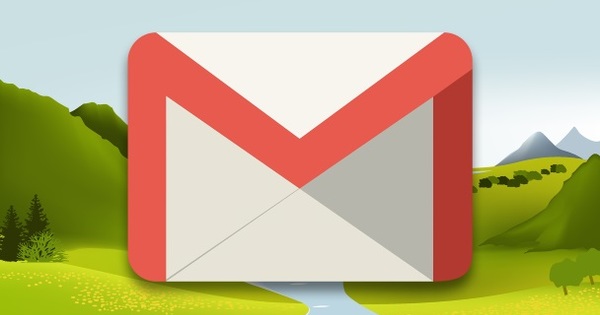I've never met anyone who only uses Google+, because no one leaves Facebook for Google+. Still, many people have a Google+ account, mainly because the network is so closely linked to Gmail, Google Drive, and Maps. But what can you actually do with it?
It's not uncommon to log in to Google+, fill out a biography, maybe add a photo, and then instantly forget about it. In its quest to become a superpower social network, Google+ has baked in a lot of settings, tools and resources, but such efforts make it quite overwhelming. Facebook, Twitter, Instagram, Vine - these are all simple social networks. Google+ is a lot more complicated, starting with: Who should you add to your circles? Wait a minute - what's a circle? Let's go back to basics.
Google+ for dummies
Most of us don't really need another social network, but given that we interact with Google on a daily basis, natural curiosity has fueled the growth of Google+. There are people who use the network to rank higher in Google's search results in an attempt at self-promotion. There are companies that use the private communities of the network to discuss company matters. And then you have the regular folks (you and me) who just want to know what Google+ is good for.
Like any other social network, Google+ is useless unless you build a profile so that people want to befriend you, and it helps if some of your friends are already members. Profile, friends - these things are important. Google+ helpfully searches your email contacts and provides recommendations for adding people you've worked with or attended school with, or you can search by name. Do both.
And this is where the circles come in. Just like on Facebook, Google+ allows you to limit the audience that sees the posts you post. Some things you want everyone to see, while others are meant for just a certain group of people. You can add the same people to different circles - some are both friends and colleagues, for example - and you can change the audience by post.

Google+ has tons of options once you get the hang of it. You can start or join communities, mute uninteresting posts, and share stories posted on the web. Google's broad reach means that Google+ can work with Maps and Gmail - when you search for nearby restaurants, Google+ shows you hangouts that your friends have visited or rated on the network. You can also share content directly from Gmail to your G+ page. It's in the little things.
Google+ offers almost too many possibilities, and they are not always obvious. For example, when you are writing a post, you can click on a small arrow that allows you to disable comments and shares. That is not possible with Facebook. You also have access to the Chrome extensions for Google+, which let you do everything from +1 (the equivalent of the Facebook 'like') for web pages of your choice to scheduling future posts.
But what should you post? If you already use Facebook and Twitter, it can be difficult to think of something interesting to share with your Google+ followers that they haven't seen before. If you want to keep your Google+ account active but can't think of different content to post on all your networks, you can easily post the same article or musings on different sites using services like Buffer or the aforementioned Chrome extension.

Worthwhile Photo Features
Google+ is not difficult to use, but if you look closely at it, you realize that the social network is not much different from other services. Where Google+ really excels against the competition is photo sharing.
Over the past year, the network has focused primarily on photography, and this strategy is clearly paying off. As of October, 1.5 billion photos are uploaded to Google+ every week.
Uploading your photos to the network is easiest with Chrome, which makes it easy to drag and drop your photos onto the network. With the Google+ iOS and Android apps, you can set an automatic backup setting for your images so that every photo you take with your phone is uploaded to a private folder on G+.
Once your photos are on Google, you can edit them with Google's Lightbox. The photo editing tools are only available to desktop users - Google+ is lagging behind in this area, as Instagram has shown that people want the ability to apply a filter to their photos when they're on their phone. You can enable the G+ auto-enhance feature in the apps for some subtle but pretty good editing by Google itself, and you can crop photos as well. For more intensive work, including adjusting the level of the auto-enhance feature, you'll need to open Chrome.
Extensive options
The desktop-based editing tools are solid and much more comprehensive than any other social network. They range from rudimentary cropping and rotation to old-fashioned filters, framing, sharpening, center focus, and a cool tilt shift option. You can create square images, or make photos look like they're straight out of a faded film strip from the '60s.
If you're uploading multiple photos that are clearly frames of the same action, the network's Auto Awesome feature can turn them into a composite, GIF, HDR, or mix that makes everyone look their best. Last Thursday, Google+ released an update to Auto Awesome for the holiday season that lets you turn photos of falling snow into GIFs of falling snow. The same goes for twinkling lights. The best part is that you can share some of your work with everyone while showing your private family photos only to your closest friends.
That's the problem with Google+. People get so overwhelmed with the sheer amount of options and boxes to check on every page that they give up. But if you're tired of Facebook and want a new place to share your photos that has more tools and privacy settings than Instagram, then Google+ is a good choice. You don't have to use all settings at once. You can just try it out by automatically uploading your best smartphone photos and letting Google+ pick and polish your photos.
This is a loosely translated article from our US sister site TechHive.com, written by Caitlin McGarry (@Caitlin_McGarry). The article is published by Computer!Totaal to provide you with useful How To's, smart tips and practical solutions as quickly as possible. Described terms, operations and settings may be region specific.

